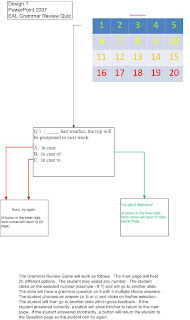Before we begin let's look at the the OIS Cloud and try to access your storage area.
If you don't remember your password, please give me your name and I will arrange for a temporary password.
Please follow these easy instructions:
To save work in the cloud please follow these steps to success:
1. login.microsoftonline.com
2. insert username/password (EXAMPLE: john.doe@student.oeirasinternationalschool.com)
3. Team Site
4. My Cloud
5. My Content
Now, let's evaluate it. Are you there? Did the instructions work? Can you save a document? Can you retrieve it?
Good job, now let's move on.
Year 10,Term 2 is done and dusted! So here we go again. On to our
final project. We're going to do a stop motion film. Let's look at an excellent example that was submitted last year.
What
is it? Stop motion (also known as stop action) is an animation
technique to make a physically manipulated object appear to move on its
own. The object is moved in small increments between individually
photographed frames, creating the illusion of movement when the series
of frames is played as a continuous sequence.
http://en.wikipedia.org/wiki/Stop_motion
Where can I find some examples to gather information, inspiration, and ideas? Smash!ng Apps
http://www.smashingapps.com/2009/06/15/21-stunning-examples-of-creatively-done-stop-motion-animations.html
Can I see another example? Sure
http://mildlymelancholy.blogspot.com/search/label/video
How can I do it? Wiki How
http://www.wikihow.com/Create-a-Stop-Motion-Animation
Let's start our Investigate today.
Our unit question is: How can I use Computer Technology to creatively tell a story?
Area of Interaction: Human Ingenuity
1. Identify the Problem (2 paragraphs)
1.
The
best way to begin your Investigation is by writing a paragraph that
explains the problem as you understand it. (State problem, restate
problem in your own words, say why this project is relevant, say how you
will solve the problem, say who your customer is).
2. Then write a paragraph to connect your project to an Area of Interaction (Human Ingenuity)
Click here for the Identify the Problem Template.
2. Develop a Design Brief (Ask and answer the following questions or look at the following research topics to help you solve your problem)
Write a sentence to introduce this section of the project (ex: To drive my Investigation I will conduct the following research.)
1. What is stop motion? Research and explain in your own words.
2. What are the elements of a story?
3. Look at 4 stop motion videos to gather information and ideas to make your own video?
(What worked? What didn't? What did you like? What didn't you like? What ideas can you use?
4. What techniques do I need to know to create a stop motion video? (Look at a tutorial).
5. What video host will you use? (Look at 2, justify choice)
Look at any other topics that might help you create a great stop motion video (lighting, file format, etc).
IB Learner Profile: Inquirer
Learning
objectives: independently identify meaningful questions, carrry out
web search, select and organize appropriate sources and evaluate them.



.png)